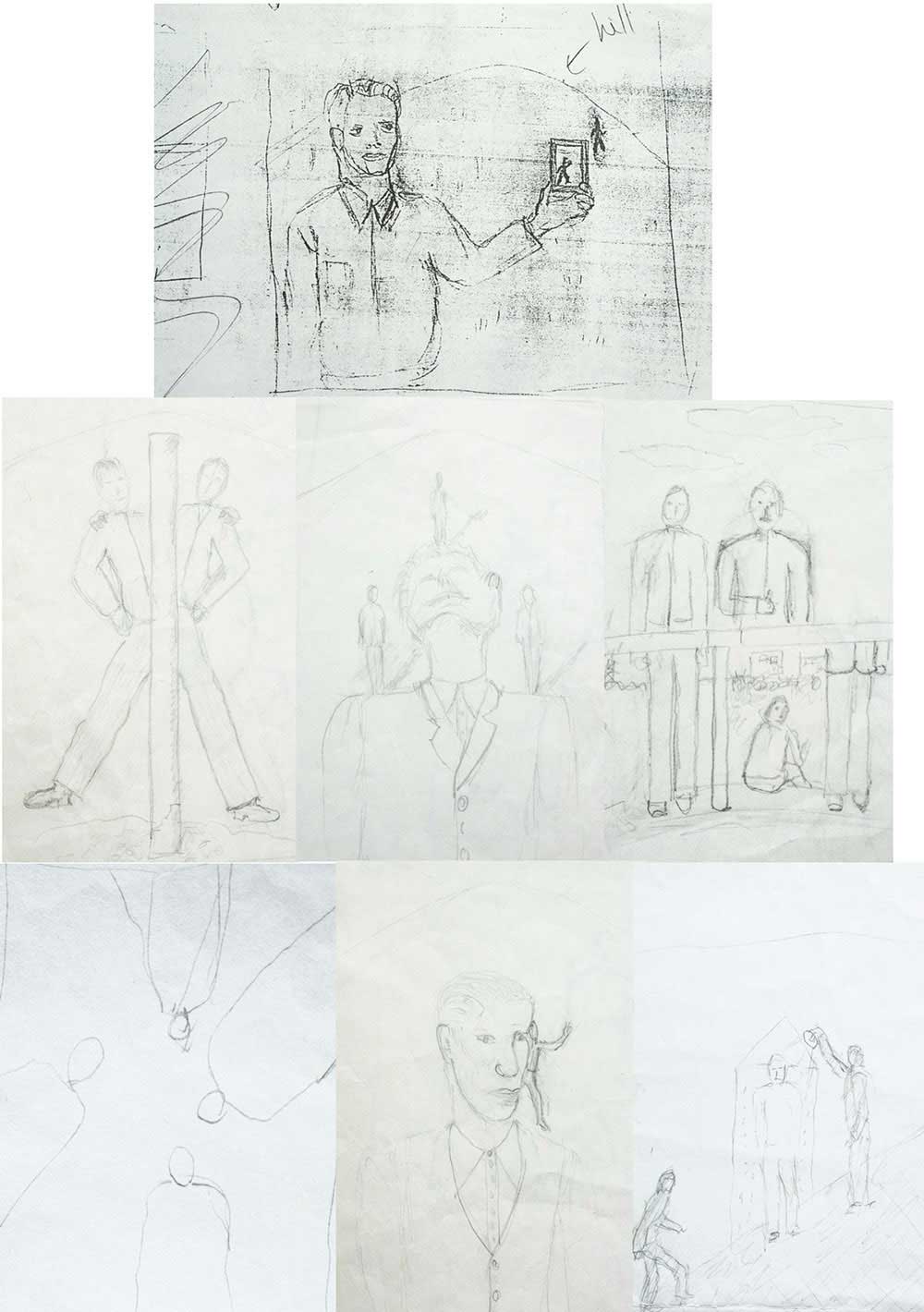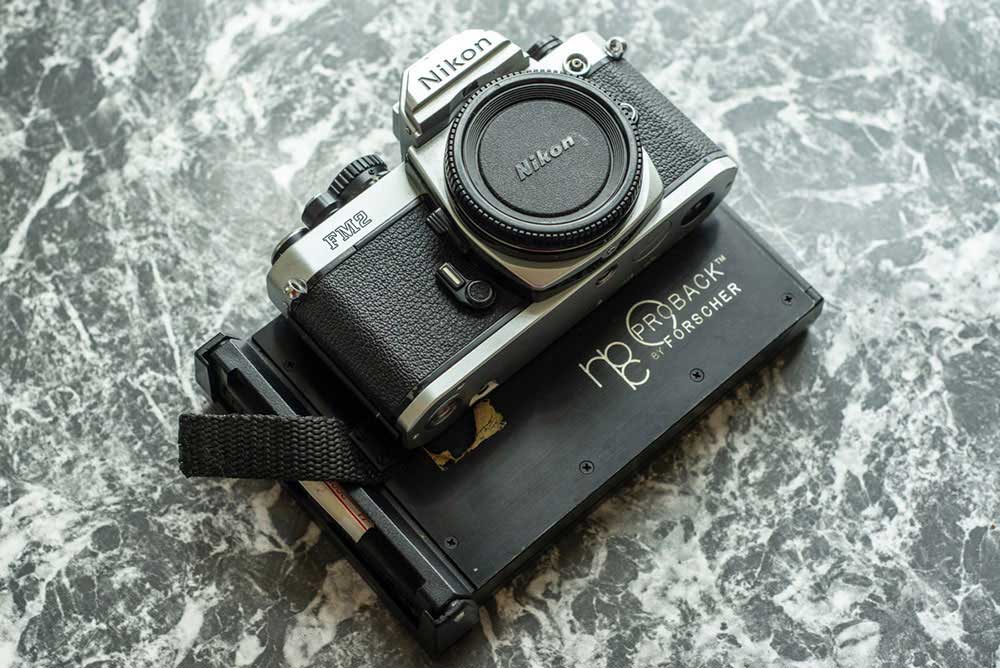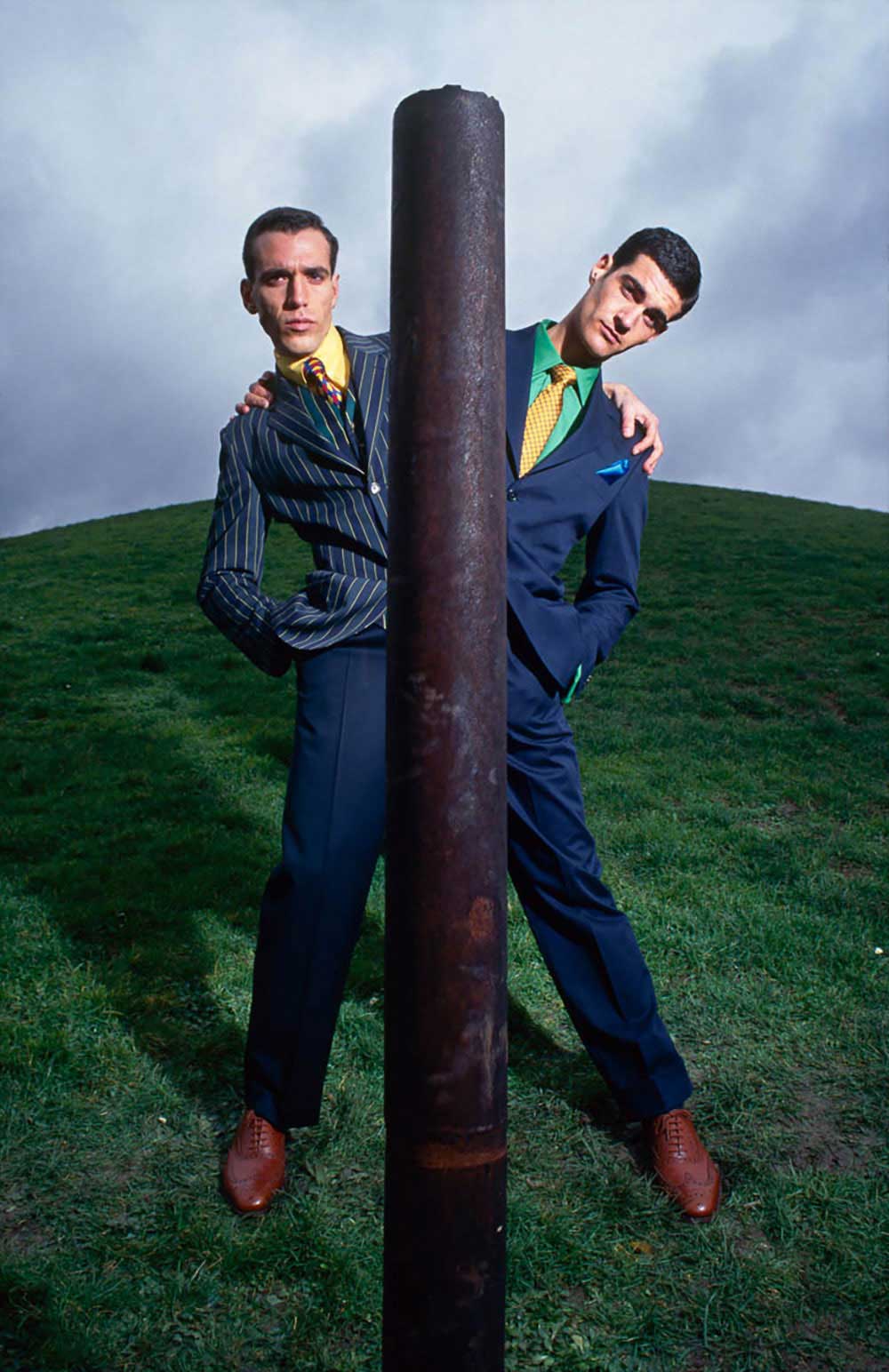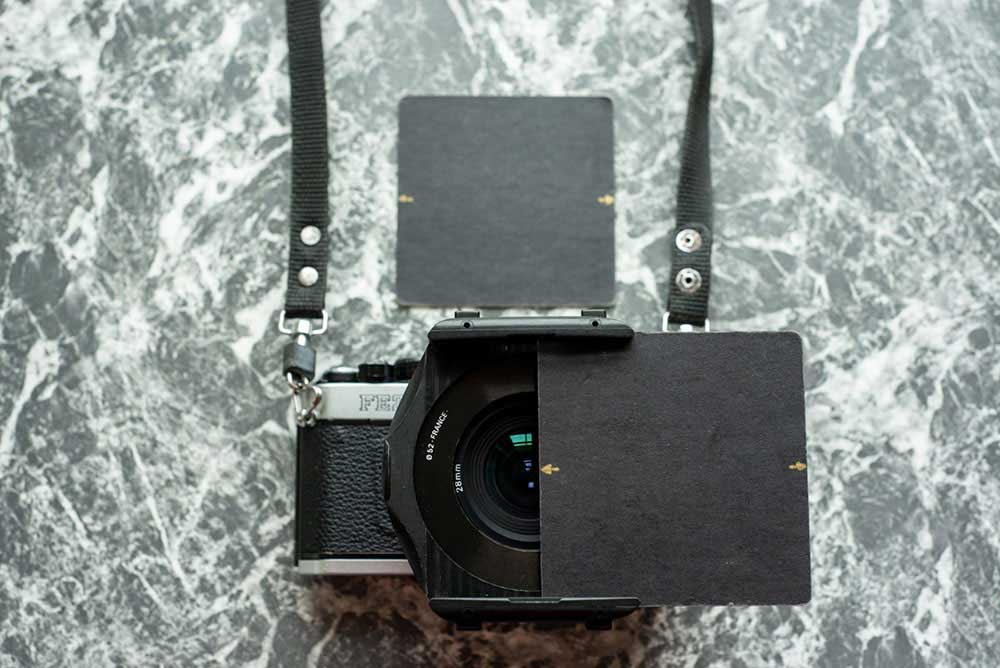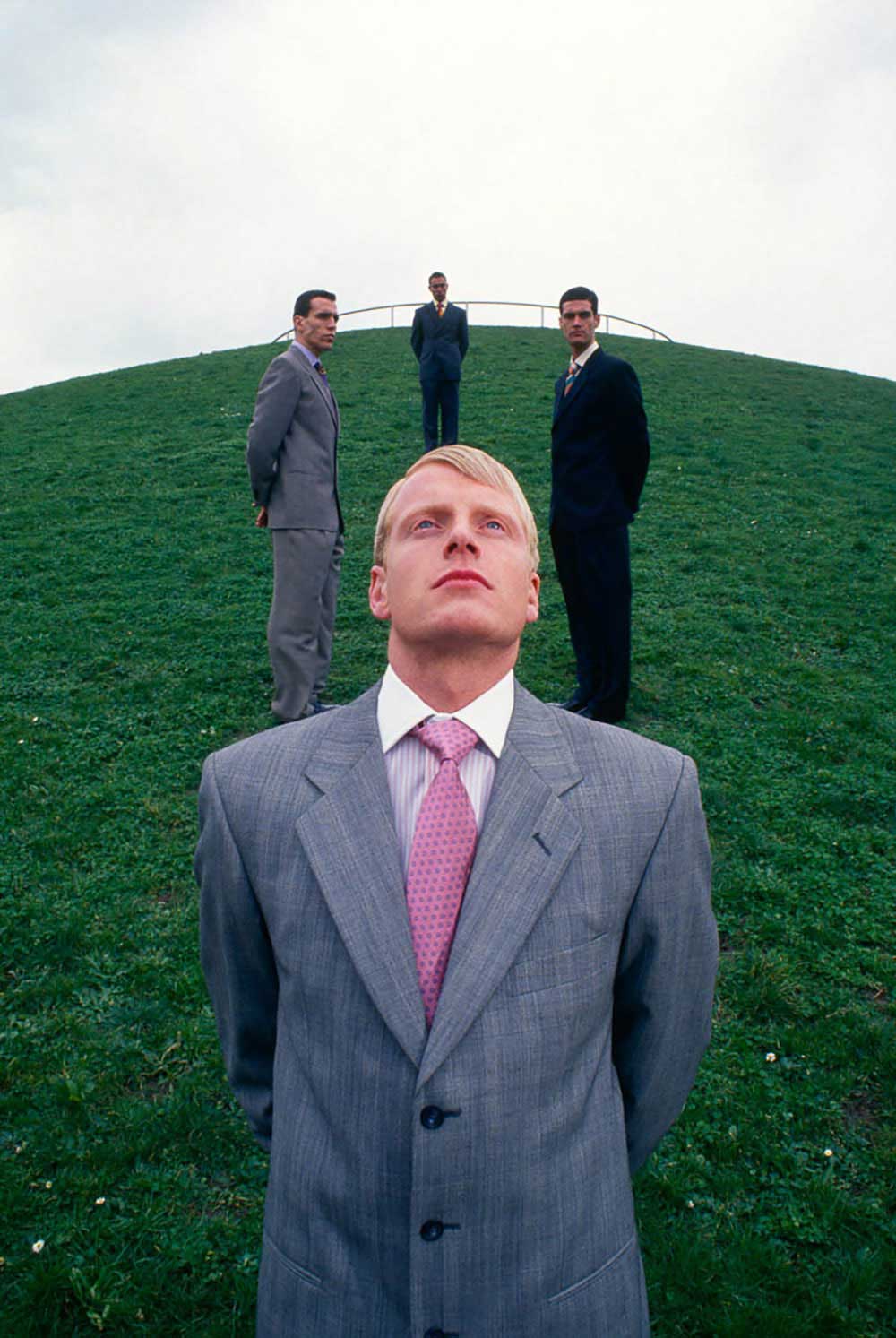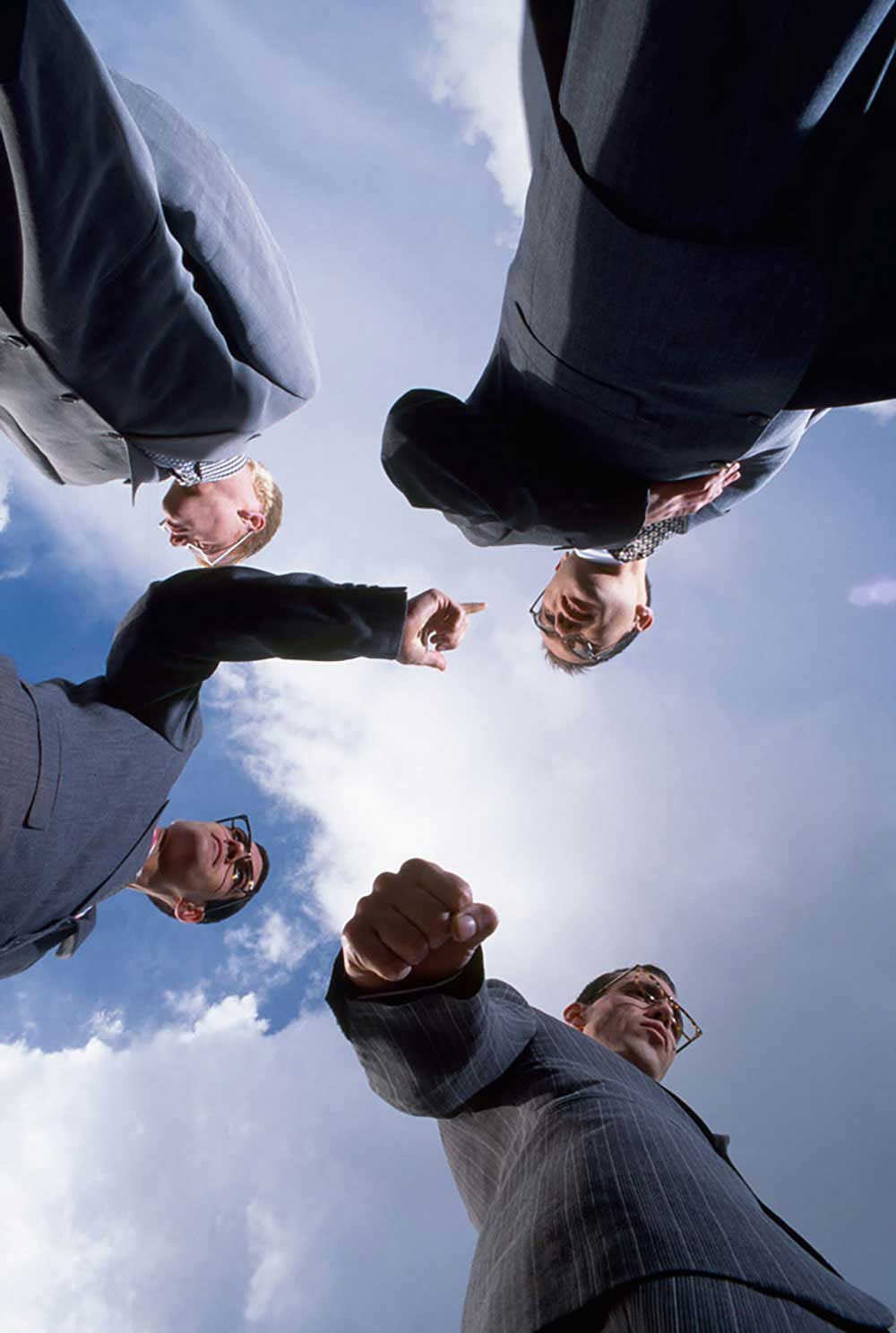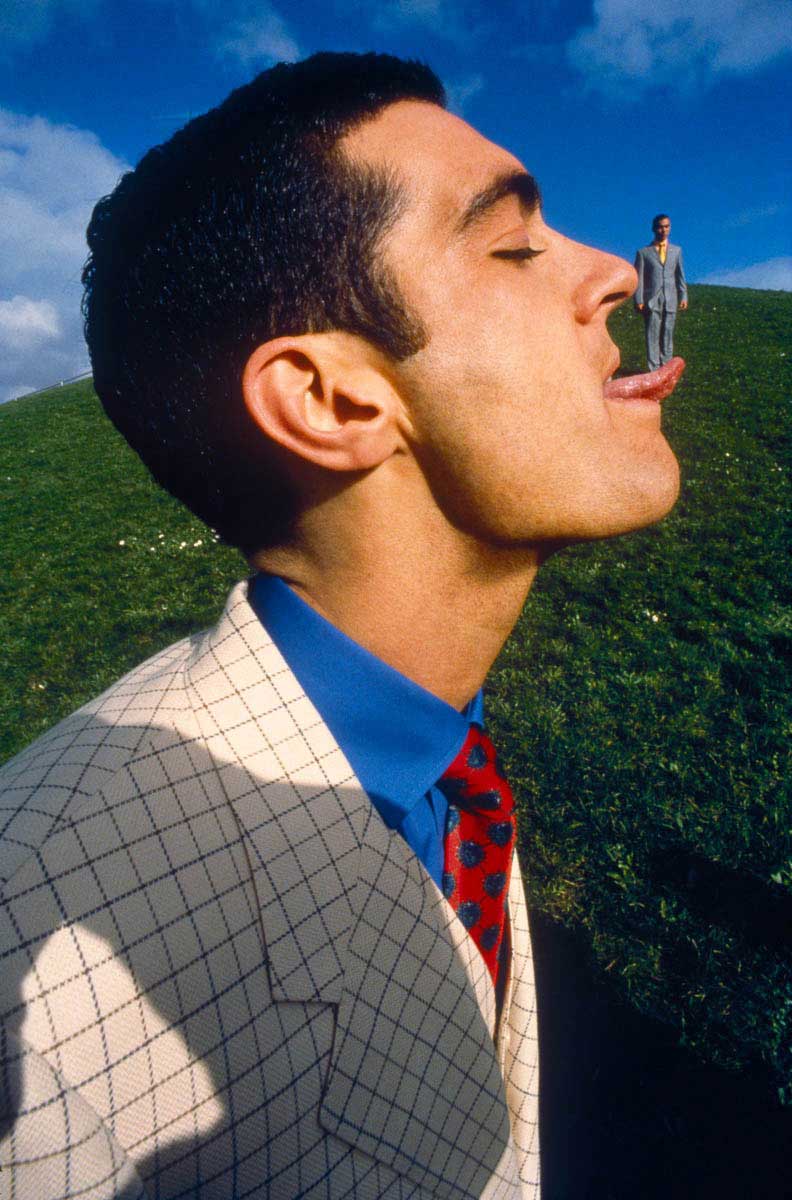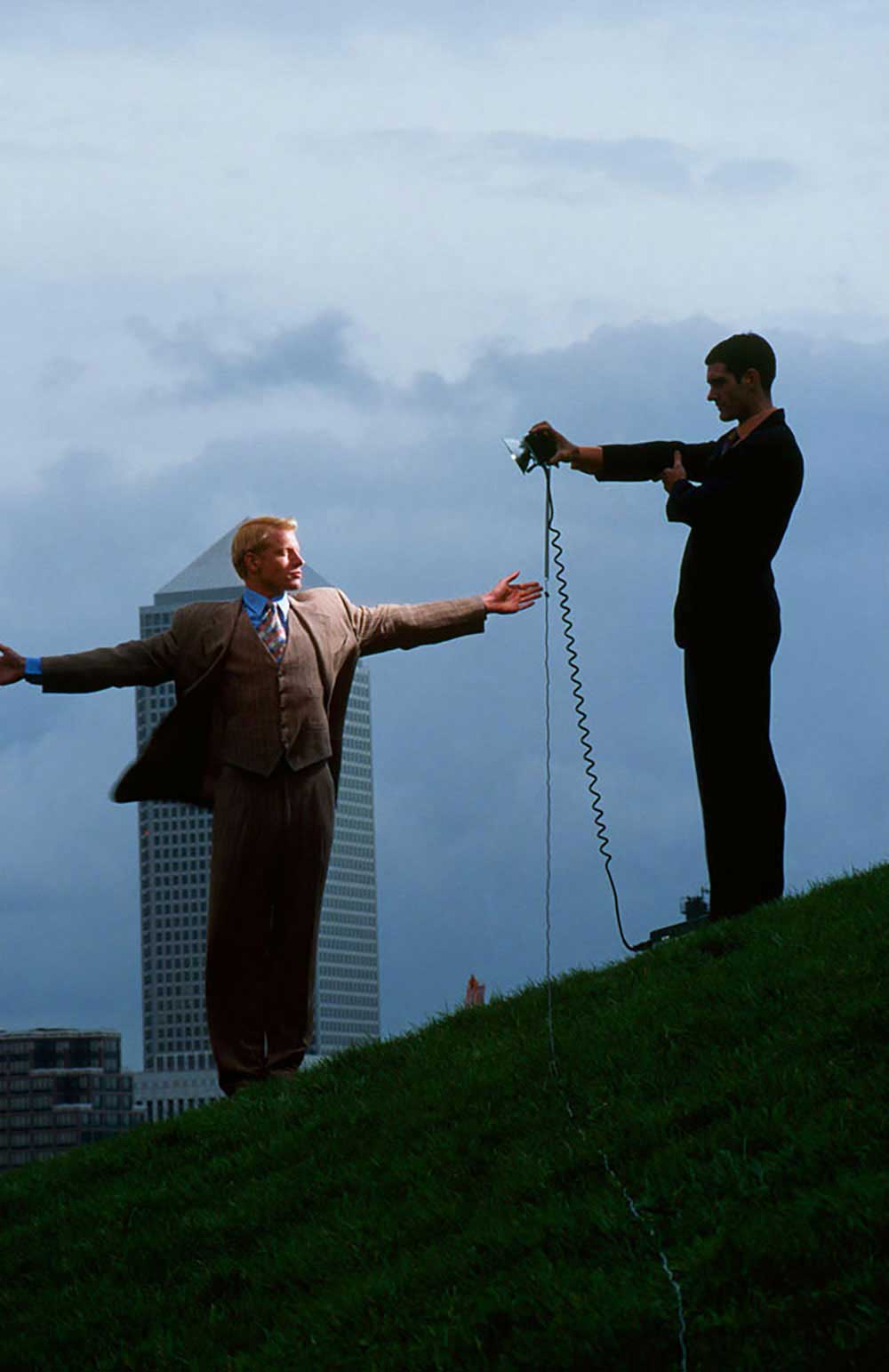I was once asked by a fashion magazine to shoot a men’s fashion story. It was going to feature suits. Before the words even left their mouths, I knew exactly where I wanted to shoot it.
Nine years before, while out riding my bike, I had come across a manmade hill in the Docklands of East London. It was very steep and I thought it would be an ideal place to do a forced perspective set of pictures. Subsequently, from time to time, when I was passing, I would go to the hill and try to envisage what I would do there. One of the ways I come up with ideas, is to look through the camera and wonder what I can enact in the frame. I had come up with two compositions and had sketched them in my A4 refill pad.
I believe that in the minds of fashion editors, they think of a fashion story as a narrative. But in actual fact they seldom read like one and what they are really, are similar clothes taken in similar environments. And that is how I approach them. I was given six pages, I already had two ideas and had to come up with another four. In fact, I decided on another five in case one failed. In search of more ideas, I rode back to the hill and walked around it. At the bottom there was a rusty pole I thought I could make use of. I then climbed to the top. When I had first visited the hill all those years before, it was covered with grass but now there were stone stairs leading to the top and the top was paved with a railing going all the way around. I thought I could make use of that as well. Back home I puzzled out some more ideas. The magazine wanted sketches of what I was proposing. I generally do not like having to tell people my ideas beforehand because I find them difficult to explain and the reason why I think they will work. The real reason though is I do not think it is any of their business! Anyway, they wanted to see sketches. I cannot draw as such but I worked them up into bigger and neater drawings than I normally would do for myself. I showed them and they liked the ideas and I was given the go ahead. My working title for it was Fools on the Hill after the Beatle’s song, The Fool on the Hill.
In my opinion, fashion photography gives you the most creative freedom in the realms of commissioned photography. They lean heavily on the photographer to come up with ideas and you get the chance to execute something that is at the top of your mind at that moment. You get to choose scenarios, models and location. In advertising, the idea has been worked out even before they choose the photographer. When I shot environmental portraits, I would turn up to a new place each time, had to make a snap decision as to which corner of the room to point the camera and I generally only got an hour of their time. With fashion you could ask a model to stand on their head if you thought it would make a good picture. And they would if they were capable of doing so but you generally cannot ask a celebrity to do the same.
The shoot took place over two days in February. The second was on Valentine’s day. There was me and my assistant, the fashion editor and his assistant to handle the clothes, a makeup artist to do the grooming (not much makeup needed), the four models and the transport driver. The great thing is you can use a magazine’s resources and organisational abilities to take pictures you would want to do for yourself in any case.
I shot the pictures on my favourite film, which was Fuji Provia 100 transparency. It was saturated and punchy and gave me the colours I most liked. To preserve the colour whatever the weather, I would often use flash and on this occasion, I had two, my favourite flash I still use today, a Metz CT-60 and a Norman 400b.
I also had a Nikon FM2 with a polaroid back. A Polaroid back for a 35mm camera was definitely a rarity and cost about £800. I had read about them and had wanted one for years. What it consisted of was a plastic film holder and a rectangle of optical glass that took the image from film plane to the Polaroid. You could take up to two 24mm x 36mm fuzzy images on one sheet of Polaroid. It was no good for checking sharpness but told you if your exposure was in the ball park. I had pulled off a coup by buying one second hand with an FM2 attached for £300. You needed a dedicated camera for practical use. My problem was how long do you develop the Polaroid for outdoors in winter? The temperatures during the shoot were not too cold but cold enough that I had to develop the Polaroid in my armpit. Nearly all the images were shot on 24mm and 28mm lenses and the hill was much steeper than it appears in the pictures. It was quite an effort to walk to the top on the grass.
The first shot I took was the model holding a picture frame. It was the first of my two original ideas that I had sketched years before and I wanted to start with that. I had gone out and picked out a suitably sized frame myself. I used a small aperture to get as much depth of field as I could. By the way, I am not a fan of the current vogue for super shallow depth of field. There was also a fad for it when I began as a photographer and my reaction to it was to go the opposite direction – wide angle lenses and maximal depth of field to get everything in focus. The closer I could get to f22 the better.
The pictures of the two guys either side of the pole was a double exposure. I don’t think I had heard of Photoshop when I took it. At that time digital manipulation was done by scanning film and editing them on £100,000 dedicated work stations and was very expensive to have done. I did this the cheap way, using a trick I had learned in my first year.
I would secure a Cokin filter adapter so that it did not move, then slide a square of black card into the adapter, shoot a frame, then cock the shutter without winding on the film (many cameras had a button that enabled you to do this). I would then butt another piece of card against the first then remove the first. F8 was the smallest aperture that could be used on a 28mm lens, otherwise you would get a black line. If the camera or the film did not move, it was almost seamless. Cokin had a slider that slid from one side of the adapter to the other between shots, which I started out with, but I preferred the card method.
I shot most of them on a tripod. For the above shot, I just set up the camera and moved the models into position. The scale of the models in the background were larger than I had imagined them, but there is always a difference between imagination and reality and I was not consulting my sketches, in any case. It was cloudy and the light started to go and we decided to do the rest of it the next week.
We readjourned three or four days later on Valentine’s Day to complete the shoot. It was sunnier than the first day and the first shot up was the man holding the umbrella on top of the hill. Using my double exposure technique, I stopped down the lens to make sure the positioning of the card was accurate. I then set up the flash to fill in the shadows. All this time I had to think about who was going to be the central figure and where he was going to move to. While this was going on, I saw the small cloud moving from the right towards my frame and reckoned that there was a good chance it would end up behind the head of the model. As it slowly came into the frame, I took a couple of shots for safety then waited for it to be positioned directly behind the model’s head. I took the picture knowing that would be the definitive image.
While atop the hill, I laid on my back to take the above picture. It will work rotated anyway around.
Back at the bottom of the hill, I was setting up the shot with the model in a white jacket, trying to get the background model in the correct position next to his head, when he stuck out his tongue. I thought it would be interesting if the model would appear to balance on his tongue. I always go to shoots with ideas but I am always open if something interesting turns up. There were daisies in the grass all around, which suddenly brought to mind a Henri Cartier-Bresson photograph I had seen, of an old man with a flower in the corner of his mouth. I decided to do something similar. I preferred the shot with the tongue and did not use that one.
The seventh and final setup, the backup in case one failed, was the man in front of Canary Wharf Tower lit by another holding a flash. That was taken with zoom. It was a hassle trying to setup a regular tripod on the side of a steep hill.
Back in the days of film you would go to the lab for the results of a job and you would open the envelope with nervous anticipation to see if they were properly exposed. You would lay them on the light box and once reassured you could then relax while searching for the good shots. These went very well. I picked out my favourite seven frames and gave it to the magazine. They were pleased also. The backup picture did not make the cut.
Alva Bernadine
Alva Bernadine makes photographs and films. By using themes such as surrealism, sexuality and violence, Bernadine touches various overlapping topics and strategies. Several reoccurring subject matters can be recognised, such as mirrors, shadows, optical effects and representations of the female form. The work is filled with invented surreal scenarios, witty events, troubling scenes from movies that were never made and almost hallucinatory images that invoke narrative, prompting you to imagine what came before or what is about to happen. They are not only about desire but the problems that go with it. Bernadine was born in Grenada, West Indies and grew up on the outskirts of London. He won the Vogue/Sotheby’s Cecil Beaton Award as a young photographer and has since worked for many prestigious magazines and became Erotic Photographer of the Year for his first book, Bernadinism: How to Dominate Men and Subjugate Women.



